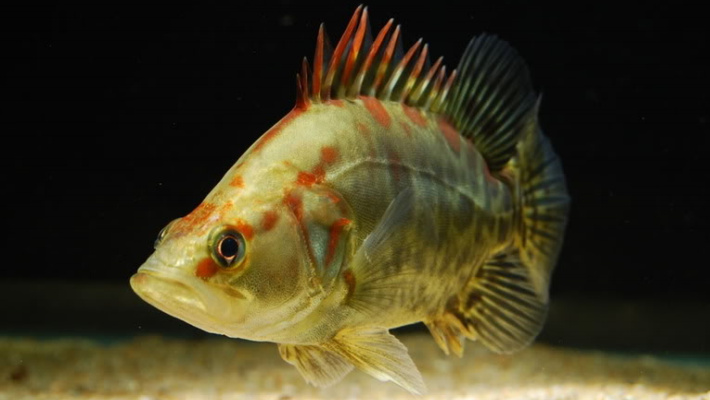|
Contributions of bacteria, fungi and
detritivorous macroinvertebrates (shredders) to leaf litter breakdown in
freshwater are studied by Hieber & Gessner (2002), in Germany. They
have enclosed alder (Alnus glutinosa)
and willow (Salix fragilis) leaves in
coarse-mesh bags (5 g dry mass), placed them in the stream during peak leaf
fall and retrieved periodically to study. Leaves have been retrieved after 1,
3, 7, 14, 28 and 55 days of submersion. In
is shown that leaves decompose rapidly with the exponential breakdown coefficients k
of 0.035 per day (alder) and 0.027 per day (willow). Leaves are also quickly colonized within the first 4
weeks of decomposition, when shredder biomass reach 263 and 141 mg dry mass per
litter bag, respectively. Maximum bacterial numbers (5,6 and 4,8 x 1010
g-1 detrital dry mass) are attained after 8 weeks
and corresponded to biomass of 3,6 (alder) and 3,1 (willow) mg dry mass g-1. This value is less than 5% of the maximum
fungal biomass (77 and 70 mg dry mass g-1, respectively). Aquatic hyphomycetes are
equivalent to the daily conidial production of 9.4 and 2.9 mg dry mass g-1 on alder and willow, respectively. Shredder
feeding rates indicate that shredders account for the largest portion of
overall leaf mass loss (64 % and 51 % on alder and willow leaves,
respectively). According to Hieber & Gessner (2002), fungi contribute at
least 15 % and 18 % to leaf litter background, bacterial contribution is
estimated at the substantial (7 % and 9 %) levels.
As
mentioned above, Hieber & Gessner (2002) have found that conditioned leaves
of alder, A. glutinosa, decompose faster
(92 % of initial dry mass after 8 weaks) than leaves of willow, S. fragilis (74 %). According to Gessner
& Chauvet (1994), leaf decomposition rate (in stream in the French Pyrenees) decreases in the following order: ash (Fraxinus
excelsior) (k = 0,059), wild cherry (Prunus
avium), alder (A. glutinosa),
hazel (Corylus avellana), sycamore (Platanus hybrida), beech (Fagus sylvatica) and evergreen oak (Cuercus ilex) (findings for sycamore and
oak are given for comparison). Decomposition rates (in stream in the Northern Appenins, Italy)
of conditioned leaves of maple, Aser
pseudoplatanus (0,054), and elm, Ulmus
minor (0,036), are also high (Gazzera et al., 1993).
Numerous papers have been published that
directly examine decomposition in leaf mixtures as well as in the component
species decaying alone (for review, see Gartner & Cardon, 2004). From these litter-mix
experiments, it is clear that decomposition patterns are not always predictable
from single-species dynamics. Non-additive
patterns of mass loss are observed in 67 % of tested mixtures, mass loss is
often but not always increased when litters of different species are mixed.
In the
experiments by Hieber & Gessner (2002), macroinvertebrates have been
represented chiefly by stonefly larvae Nemoura, Protonemura,
Amphinemura and Leuctra, caddisfly Potamophylax
as well as amphipod Gammarus fossarum.
Collector-gatherers and scrapers are mayfly larvae such as Baetis and Leptophlebiidae, together accounting for an additional
44% of total numbers but only 19% of
biomass. Maximum densities of macroinvertabrates have been observed to 4 weeks
after leaf submersion, with an average of
708 (alder) and 422 (willow) animals per 5 g leaf pack (Hieber & Gessner,
2002).
For
comparison, leaves of beech, F. sylvatica,
are colonized in Irish rivers by macroinvertebrates of 76 taxa (Murphy et al.,
1998).
Tiegs et al. (2008) have manipulated the quantity of leaf
litter to test whether: 1) greater litter quantity promotes microbial leaf
decomposition (through greater microbial inoculum potential), and 2) reduced
litter quantity enhances decomposition by leaf-shredding invertebrates (because
shredders aggregate on rare resource patches). Decomposition rates and
macroinvertebrate colonization of alder leaves placed in coarse- and fine-mesh
litter bags, an approach intended to allow or prevent access to leaves by leaf-shredding
macroinvertebrates, are also determined. Tiegs et al. (2008) have found that the effects caused by manipulations
of litter quantities on leaf decomposition and macroinvertebrate colonization are
relatively weak, such large and highly mobile shredder as amphipod G. fossarum can play an instrumental role
in causing differences in decomposition in response to litter manipulations.
Basic References
Gartner T.B., Cardon Z.G. 2004. Decomposition dynamics in
mixed-species leaf litter. Oikos 104,
230-246
Gazzera S.B.,
Cummins K.W., Salmoiraghi G. 1993. Elm and maple processing rates: comparisons
between and within streams. Annales de Limnologie
29, 189-202
Gessner M.O.,
Chauvet E. 1994. Importance of stream microfungi in controlling
breakdown rates of leaf litter. Ecology
75, 1807-1817
Hieber M.,
Gessner M.O. 2002. Contribution
of stream detrivores, fungi, and bacteria to leaf breakdown based on biomass
estimates. Ecology 83, 1026-1038
Murphy J.F., Giller P.S., Horan M.A. 1998. Spatial scale
and the aggregation of stream macroinvertebrates associated with leaf packs. Freshwater Biology 39, 325-337
Tiegs
S.D., Peter F.D., Robinson C.T., Uehlinger U., Gessner M.O. 2008. Leaf decomposition and invertebrate colonization responses
to manipulated litter quantity in streams. Journal
of the North American Benthological Society 27, 321-331
|








 SUBSCRIBE
SUBSCRIBE


